The research paper published by IJSER journal is about Unsteady MHD mixed convection flow of a viscous dissipating micropolar fluids in a boundary layer slip flow regime with Joule heating 1
ISSN 2229-5518
Unsteady MHD mixed convection flow of a viscous dissipating micropolar fluids in a boundary layer slip flow regime with Joule heating
A. A. Bakra,b, Z. A. S. Raizahb
a Department of Mathematics, Faculty of Science, Al-Azhar University, Assiut, Egypt. b Department of Mathematics, Faculty of Science. Abha, King Khaled University, Saudi Arabia
Abstract— Simultaneous heat and mass transfer in unsteady free convection flow with thermal radiation and thermal diffusion past an impulsively started infinite vertic al porous plate subjected to a strong magnetic field is presented. The dimensionless governing equations for this investigation are solved analytically using two terms harmonic and non-harmonic functions. The influence of various parameters on the convectively cooled or convectively heated plate in the laminar boundary layer are established. An analysis of the effects of the parameters on the concentration, velocity and temperature profiles, as well as skin friction and the rates of mass and heat t ransfer is done with the aid of graphs and tables.
Keywords: Heat and mass transfer; Hall effects; Chemical reaction; Heat generation; Thermal diffusion; Thermal radiation;micropolar fluid.
1 INTRODUCTION
—————————— ——————————
he study of flow and heat transfer for an electrically con- ducting micropolar fluid over a porous plate under the influence of a magnetic field has attracted the interest of many investigators in view of its applications in many engi- neering problems such as magnetohydrodynamic (MHD) ge- nerator, plasma studies, nuclear reactors, oil exploration and geothermal energy extractions [1]. In addition, due to its prac- tical application to boundary layer control and thermal protec- tion in high energy flow by means of wall velocity and mass transfer, considerable attention has been paid to the thermal boundary layer flows over moving boundaries[2]. The theory of micropolar fluids which takes into account the inertial cha- racteristics of the substructure particles which are allowed to undergo rotation has been proposed by Eringen [3]. Micropo- lar fluids are fluids with microstructure belonging to a class of fluids with non-symmetrical stress tensor. Physically, they represent fluids consisting of randomly oriented particles sus-

pended in a viscous medium
It is well known that the boundary condition for a viscous flu-
id at a solid wall obeys no-slip condition, i.e., the fluid velocity
matches the velocity of the solid boundary. However, in many
practical applications, the particle adjacent to a permeable sur-
face no longer takes the velocity of the surface but the particle
at the surface has a finite tangential velocity which slips along
the surface. The flow regime is called a slip-flow regime, and
this effect cannot be neglected. Sharma and Chaudhury [4]
studied the effect of variable suction on transient free convec- tive viscous incompressible flow past a vertical plate in a slip- flow regime. Hayat et al. [5] investigated the flow of an elasti- co-viscous fluid past an infinite wall with time-dependent suc-

tion. Hayat et al [6] examined the non-Newtonian flows over an oscillating plate with variable suction. Sahin [7] have stu- died the influence of chemical reaction on transient MHD free convection flow over a vertical plate in slip-flow regime. Hayat et al [8] studied fluctuating flow of a third-order fluid past an infinite plate with variable suction. Sharma [9] investi- gated the effects of periodic temperature and concentration on the unsteady free stream consisting of a mean velocity which vary exponentially with time

Many practical diffusive operations involve the molecular dif- fusion of species in the presence of a chemical reaction within or at the boundary layer. The study of heat and mass transfer in the presence of chemical reaction is of practical importance due to its occurrence in many branches of science and engi- neering. Chemical reaction usually accompany a large amount of exothermic and endothermic reactions. Thus the study of heat generation effects is important in moving fluids under- going exothermic or endothermic chemical reaction. Muthu- cumaraswamy and Ganesan [10] studied the effect of first- order chemical reaction and injection flow on characteristics in an unsteady upward motion of an isothermal plate. Chamkha [11] studied the MHD flow of uniformly stretched vertical permeable surface in the presence of heat genera- tion/absorption and a chemical reaction. Raptis and Perdikis [12] analyzed the effect of a chemical reaction of an electrically conducting viscous fluid on the flow over a non-linear (qua- dratic) semi-infinite stretching sheet in the presence of trans- verse magnetic field. Ibrahim et al [13] studied the effect of the chemical reaction and radiation absorption on the unstea- dy MHD free convection flow past a semi-infinite vertical
The corresponding author Tel.: +966 –0533879159; fax: 002-088-2325436
Email: aa_bakr2008@yahoo.com
IJSER © 2012
http://www.ijser.org
The research paper published by IJSER journal is about Unsteady MHD mixed convection flow of a viscous dissipating micropolar fluids in a boundary layer slip flow regime with Joule heating 2
ISSN 2229-5518
permeable moving plate with heat source and suction. Ghaly and Seddeek [14] have investigated the effect of chemical reac-
u*
u*

v

1
P
( r )

2u*
gT (T * T )
tion, heat and mass transfer on laminar flow among a semi infinite horizontal plate with temperature dependent viscosi-
t*
y*
x*
B2
y*2
*
(2)
ty. Bakr [15] has investigated free convection heat and mass transfer adjacent to moving vertical porous infinite plate for

gc (C* C ) ( 0


)u* 2r
K * y
incompressible, micropolar fluid in a rotating frame of refer-
*
* *


v
2 *
ence in the presence of heat generation or absorption effects, a
first-order chemical reactions. Pal and Talukdar [16] studied
effect of buoyancy and chemical reaction on MHD mixed con-
t *
y*
j *
y*2
(3)
vection heat and mass transfer in a porous medium with
T *

* T *
2T * Q


u
* 2

thermal radiation and Ohmic heating
The objective of the present study is to analyze the effects of

v
t* y
y*2
(T T )
C p
C y*
first-order chemical reaction and thermal radiation on Mixed
B2
*2
1 q*

0

u r
convective flow of a micropolar fluid past an infinite vertical
plate in the presence of viscous and Ohmic heating. We have
also considered the slip velocity with periodic temperature
C p
*
C K *
*
C p y*
2 *
(4)
and concentration boundary conditions at the plate surface in


C w* C
C

Dm
R(C * C )
the present paper. Possible new emerging engineering areas of the type of the problem considered in the present paper can be
t *
z*
z*2
(5)
found in many industries such as in powder industry and in
where
u*, v* and t *
are the dimensional distances along and
generating electric power in which electrical energy is ex-
perpendicular to the plate and dimensional time, respectively,
tracted directly from moving electrically conducting fluid.
Also, the results would be useful in many practical areas re-
u* and v*
x* and y*
are the components of dimensional velocities along directions, respectively, T is the dimensional tem-
lated to the diffusive operations which involve the molecular
perature, C *
is the dimensional concentration, Cw
and Tw
diffusion of species with chemical reaction. The flow in the
are the concentration and temperature at the wall, respective-
porous medium deals with the analysis in which the differen-
ly. C and T
are the free stream dimensional concentration
tial equations governing the motion is based on Darcy’s law,
and temperature, respectively. is the fluid density, is the
which accounts for the drag exerted by the porous medium.
kinematic viscosity, Cp
is the specific heat at constant pres-
The classical model introduced by Cogley et al. [17] is used
sure, Bo is the magnetic induction,
K * is the permeability of
for the radiation effects as it has the merit of simplicity and
the porous medium, BT
and Bc
are the thermal and con-
enables us to introduce linear term in temperature in the anal-
ysis for optically thin media.
2 MATHEMATICAL ANALYSIS
centration expansions coefficients, respectively, Q is the di- mensional heat absorption coefficient, D is the mass diffusivi- ty, g is the gravitational acceleration, R is the chemical reac-
tion parameter, *
qr is the local radiative heat flux. The term
Q(T - T )
is assumed to be the amount of heat generated or
Consider unsteady MHD mixed convection flow of a micropo-
lar fluid from a permeable semi-infinite verticalplate subject to
absorbed per unit volume, Q is a constant, which may take on either positive or negative values. When the wall temperature
slip boundary condition at the interface of porous medium in
T * exceeds the free stream temperature T
, the source term
the presence of thermal radiation, viscous and Joule heating
Q > 0
and heat sink when Q 0 . The second and third terms
effects. Time dependent suction velocity is imposed on the
plate surface. A uniform transverse magnetic field of magni-
tude B0 is applied in the direction of y*-axis in the presence of
thermal radiation and thermal and concentration buoyancy
effects. The x* -axis is taken along the vertical infinite plate,
which is the direction of the flow and y*-axis is taken normal to the plate (see Fig. 1). We assume that no electric field is
on RHS of the momentum Eq. (2) denote the thermal and con- centration buoyancy effects, respectively. Also, the fourth and fifth terms on the RHS of energy Eq. (4) represents the viscous and Joule heating effects, respectively. The second and third term on the RHS of Eq. (4) denote the inclusion of the effect of heat absorption and thermal radiation effects, respectively. The boundary conditions for the model are:
present and induced magnetic fields are negligible. The por-
*
* u* *
u*
n*t*
ous medium is assumed to be uniform, isotropic and in ther-
mal equilibrium with the plate. The plate is having variable
u U0 L1 ,
y
m

,T Tw (Tw T )e
y
temperature and concentration which varies with time. All
, C* Cw (Cw C )en t
at y*
(6)
fluid properties are assumed to be constant except the density in the body force term of the linear momentum balance. Under
u*
U *
U0 (1
en*t*
),
* 0,T
* T ,
C* C
as y*
*
the Boussinesq and boundary layer approximations the go-
The boundary condition for microrotation variable
de-
verning equations for this problem can be written as
v*

0,
(1)
scribes its relationship with the surface stress. In the above
boundary condition (6), the parameter m is a number between
0 and 1 that relates to the microgyration vector to the shear
y*
stress. It is noteworthy that for the case m = 0 and from the
IJSER © 2012
http://www.ijser.org
The research paper published by IJSER journal is about Unsteady MHD mixed convection flow of a viscous dissipating micropolar fluids in a boundary layer slip flow regime with Joule heating 3
ISSN 2229-5518
boundary condition stated above we have * (0) 0 , this cor- responds to the case where the particle density is sufficiently
(1
1 2


) (
)
2
2 u
Ae

Pr 2
F
NEc u

Ec
y
t
large so that microelements close to the wall are unable to ro-
tate. The case corresponding to m = 0 .5 results in the vanishing
of the antisymmetric part of the stress tensor and represents
weak concentration. The value m = 1 is representative of turbu-
y y
2
(13)
lent boundary layer. In the above boundary condition (6) the



C (1 Aent ) C 1
C C
(14)
plate is in uniform motion and subjected to variable suction t
y Sc y 2
and slip boundary condition. In the parameter
L* 2 m1 L , L

1 m1
The boundary conditions are
is the molecular mean free path and
m1 is the tangential mo-
u u
mentum accommodation coefficient. Boundary conditions (6)
is based on the slip-flow condition with oscillatory tempera-

u 1 h
y

, m
y
nt
, 1 ent , C 1 ent , on y 0
(15)
ture and concentration prevailing at the permeable surface.
u U ( 1 e
), 0, 0, C 0 ,
as y
The radiative heat flux is given by [17] as
q*

4(T T )I
y*
eb
(7)
where Gr and Gm are the Grashof and solutal Grashof num- ber, Pr is the Prandtl number, M is the magnetic field parame- ter, K is the permeability parameter, is the Chemical reac- tion parameter, Sc is the Schmidt number, is the heat source

where
I Kw
* d ,
Kw
is the absorption coefficient at
parameter and F is the absorption of radiation parameter.
the wall an0d
e Tis Plank’s function. The advantages and li-
c p
gT (Tw T )
g0c (Cw C )
b
mitations of the Cogley-Vincenti-Giles formulation, which is
to used to simulate the radiation component of heat transfer,
Sc

, Pr
Dm
, Gr
k
V 2U0
2

, Gm

,
V 2U0
*
are (i) it does not require an extra transport equation for the

Q
, F

4I
B



, M , ,

(1 1 ),
incident radiation, and (ii) it can only be used for an optically thin, near-equilibrium and non-gray gas. Cogley model is well
C pV 2
2
0
C pV 2
L* V0
V 2
R
j* 2
1
suited for (i) surface-to-surface radiant heating or cooling, (iii) Coupled radiation, convection, and/or conduction heat trans- fer and (iv) Radiation in glass processing, glass fiber drawing,

Ec
C p
(Tw
,
T )

h ,


2 , N M K V0
and ceramic processing.
The suction velocity is assumed to take the following exponen-
Furthermore, the spin-gradient viscosity which gives some
relationship between the coefficient of viscosity and micro-
*


tial form:
inertia is defined as
( ) j* (1 ) j * where denotes
2 2

* * the dimensionless viscosity ratio, defined as follows: in
v* V0 (1 Aen t )
where A is real positive constant, is constant ( A 1 )
(8)
and
which is the coefficient of gyro-viscosity (or vortex vi osi-
ty). The mathematical statement of the problem is now com-
V0 is a scale of suction velocity which has non-zero positive
plete and embodies the solution of Equations (11)-(14) subject
to boundary conditions (15)
constant. Outside the boundary layer, Eq.(2) gives
1 P
2
( 0
U *
U *
(9)
3 Solution

x*
* )

t*
In order to reduce the above system of partial differential equ- ations to a system of ordinary differential equations in dimen-
Proceeding with analysis, we introduce the following dimen-
sionless variables:
sionless form, we perform an asymptotic analysis by representing the linear velocity, microrotation temperature
y*V0 u*
* 2
v 0
n*
*
and concentration as


y , u
U
, v
V
, t
, n


2 , U V ,
Q( y, t) Q0 ( y) entQ1( y) O( 2 )
(16)
0
T T
0
C* C
V0 0 0
U *
(10)
where Q are
u,, , C , By substituting the above Eqs.(16)
, C ( z, t ) , U
into Eqs.(11-15), equating the harmonic and non-harmonic
Tw T
Cw C U 0
terms, and neglecting the higher order of O( 2 ),
and simplify-
In view of Eqs. (7)-(10), the governing Eqs. (1)-(6) reduce to the
ing we obtains the following pairs of equations for
following dimensionless form:
2
u0, 0, 0, C0 and
u1, 1, 1, C1 :
u (1 Aent ) u dU (1 ) u Gr GmC
(1 )u" u ' N u
N Gr
GmC
2 ' , (17)




t y dt
y 2
(11)
0 0 0
0 0 0
(M 1 )(U u) 2
" ' ' '


K y
(1 )u1 u1 (N n) u1 (N n) Au0 Gr1 GmC1 2 1 , (18)


nt
1 2
" ' 0
(1 Ae
t
)
y y 2
(12)
0 0
, (19)
" ' '
1 1 1 A0 , (20)
" ' 2 2
0 Pr 0 P r(F ) 0 Pr N Ec u0 Pr Ec u0 , (21)
IJSER © 2012
http://www.ijser.org
The research paper published by IJSER journal is about Unsteady MHD mixed convection flow of a viscous dissipating micropolar fluids in a boundary layer slip flow regime with Joule heating 4
ISSN 2229-5518
" Pr ' P r(F n)1 2 Pr N Ecu0 u1 2 Pr Ec u0 u1 A Pr 1 , (22)
C " ScC'
Sc( n) C
A Sc C
, (42)
1 1 12 12
12 02
" ' 0 0
u01 1 h u0 1, u02 h u0 2 , u11 h u1 1, u12 h u1 2 ,01 m u0 1
C0 ScC0 Sc C
, (23)
,02 m u0 2,11 m u1 1,12 m u1 2,
C11 1,02 C02 12 C12 0 at
01 C01 11
y 0
(43)
" ' ( ) 1 0
u u
1, u
u
0
C1 ScC1 Sc n C
A Sc C , (24)
01 11
02 12 01
02 11 12
01 02 11 12 C01 C02 C11 C12 0 as
y
subject to the boundary conditions
u0 1 h u0 , u1 h u1 , 0 m u0 , 1 m u1 , 0 0 1 1 1 at y 0
(25)
The Eqs. (27)-(42) satisfying boundary conditions (43) are solved analytically.
u0 1,
u1 1, 0 0, 0 0, 0 0 0 0, 0 0 , 0 0 as y
The physical quantities of interest are which the local wall
Eqs. (17)-(24) are still coupled, but a great deal of insight into
shear stress
w . Given the velocity field in the boundary
the behavior of the flow variables can be obtained if we seek an asymptotic series solution about the Eckert number Ec ,
layer, we can now calculate the local wall shear stress ( i.e., skin-frict*ion) is given by
which for most incompressible flows is small. We therefore expand our flow variables as
w
ther orey, yt*he0
UV0u (0),
local friction factor C f
(48)
is given
ef
w
. In addition, the rate of heat transfer at

Q0 ( y) Q01( y) EcQ02( y) O(Ec2 )
(26)
by C f U V
u (0)
where Q are
u,,, C , Substitution of Eq. (26) into Eqs. (17)-
the surface o0 f wall in terms of Nusselt number Nu , can be
written as:
(24) and equating to zero the coefficient of different powers of Ec and neglecting higher order terms in Ec , we obtained the following sequence of approximations
Nu x
(T / y)

T Tw y 0
; Nu Re x (0)
(49)
" ' '
(1 )u01 u01 N u01 N Gr 01 GmC01 2 01 , (27)
(1 )u" u ' N u Gr GmC 2 ' , (28)
02 02 02 02 02 02
4 Results and discussion
The non-linear coupled Eqs. (27)-(42) subject to boundary con- ditions (43), which describe heat and mass transfer flow past an
" ' '
' infinite vertical plate immersed in a porous medium in the
(1 )u11 u11 (N n) u11 (N n) Au01 Gr11 GmC11 2 11 ,
(29)
presence of thermal radiation, viscous and Joule heating under the influence of magnetic field are solved analytically by per- turbation technique. In order to get physical insight into the
" ' ' '
(1 )u12 u12 ( N n) u12 (N n) Au02 Gr12 GmC12 2 12 ,
(30)
problem, the effects of various parameters encountered in the
equations of the problem are analyzed on velocity, temperature
and concentration fields with the help of figures. These results
show the influence of the various physical parameters such as
" ' 0
01 01
, (31)
thermal Grashof number Gr, solutal Grashof number Gc , magnetic field parameter M, Schmidt number Sc, permeability
" ' 0
parameter K, heat absorption parameter , chemical reaction
02 02
, (32)
parameter and thermal radiation parameter F on the velocity,
" ' A ' , (33)
11 11 11 01
" ' A ' , (34)
12 12 12 02
temperature and the concentration profiles. We have also ana- lyzed the effects of various
physical parameters such as magnetic field, thermal radiation, viscous and Joule heating on skin friction coefficient, local Nus-
" Pr '
P r(F ) 01 0 , (35)
selt number and local Sherwood number. We can extract inter-
esting insights regarding the influence of all the parameters that
" Pr ' P r(F ) Pr N u 2 Pr u 2 , (36)
02 02 02 01 01
govern this problem. In Figs. 2-7 we have prepared some graphs of the velocity, microrotation and temperature profiles for micropolar fluids with the fixed flow conditions and ma-
" Pr '
" Pr '
P r(F n)11 A Pr 0 1 , (37)
P r(F n)12 2 Pr N u01 u11 2 Pr Ec u0 1 u1 1 A Pr 0 2
terial parameters. The effect of viscosity ratio on the velocity
and angular velocity for a stationary porous plate is presented
in Figs. 2. From these figures it is shown that increase viscosity
, (38)
" ' 01 0
ratio results in increasing the velocity. Furthermore, the angular
velocity distributions decreases as parameter increases. The
influences of the chemical reaction parameter on the velocity
C01 ScC01 Sc C
, (39)
profiles across the boundary layer are presented in Fig. 3. We see that the velocity distribution across the boundary layer in-
" ' 02 0
creases with deceasing of . For different values of the chemical
C02 ScC02 Sc C
" ' (
, (40)
) 11 01
reaction parameter , the angular velocity profiles is obvious
that the influence of increasing values of . Also, shows the var-
C11 ScC11 Sc n C
A Sc C
, (41)
iation of temperature and concentration profiles for different
IJSER © 2012
http://www.ijser.org
The research paper published by IJSER journal is about Unsteady MHD mixed convection flow of a viscous dissipating micropolar fluids in a boundary layer slip flow regime with Joule heating 5
ISSN 2229-5518
value of . It is seen from this figure the temperature and con- centration profiles increase with decreasing of chemical reaction parameter . Fig. 4 is a plot of velocity profiles for various val- ues of rarefaction parameter h. It is evident from this figure that velocity distribution increases near the plate and then de- creases exponentially far away from the plate till it attains the minimum values as y∞. The effect of increasing the values of rarefaction parameter is to increase the velocity in the momen- tum boundary layer with formation of sharp peak near the plate. Thus the effect of h is more prominently observed very close to the plate which ultimately vanished far away from the plate. Also,the angular velocity distributions increases as h pa- rameter increases. The effects of radiation parameter F on veloc- ity profiles are presented in Fig. 5. From this figure we observe that, as the value of F increases, the velocity profiles decreases in the momentum boundary layer due to the fact that the mo- mentum boundary layer thickness decreases with increase in the radiation parameter F . Fig. 7 shows the variation of tem- perature profiles with y for thermal radiation parameter F . It is noted that the increase in the radiation parameter F results in decrease in the value of the temperature in the thermal boun- dary layer due to the fact that, the divergence of radiation heat
[10] Muthucumarswamy R, Ganesan P. Effect of chemical reac- tion and injection on flow characteristics in an unsteady upward motion of an isothermal plate, J Appl Mech Tech Phys, 42 (2001) 665-71.
[11] Chamkha AJ. MHD flow of uniformly stretched vertical permeable surface in the presence of heat genera- tion/absorption and a chemical reaction, Int Commun Heat Mass Transf, 30 (2003) 413-22.
[12] Raptis A, Perdikis C. viscous flow over a non-linearly stret- ching sheet in the presence of a chemical reaction and magnetic field, Int J Non-linear Mech, 41 (2006) 52-79.
[13] F. S. Ibrahim , A. M. Elaiw and A. A. Bakr, Effect of the
chemical reaction and radiation absorption on the unsteady
MHD free convection flow past a semi infinite vertical
permeable moving plate with heat source and suction,
Communications in Nonliner Sci. and Numerical Simula-
tion, 13 (2008) 1056.
[14] Ghaly AY, Seddeek MA. Chebyshev finite difference me-
thod for the effect of chemical reaction, heat and mass
transfer on laminar flow along a semiinfinite horizontal
plate with temperature dependent viscosity, Choas Soli-
tons Fract, 19 (2004) 6170.
q

flux decreases as the absorption coefficient K w
y
at the wall
[15] A A Bakr, Effects of chemical reaction on MHD free con-
increases which in turn decreases the rate of radiative heat
transfer to the fluid which causes the fluid temperature to de-
crease.
5 REFERENCES
[1] Singh KR, Cowling TG, Thermal convection magnetohy- drodynamics, Q. J. Mech. Appl. Math., 16 (1963) 1-15.
[2] Bhargava R, Takhar HS. Numerical study of heat transfer characteristics of the micropolar boundary layer near a stagnation point on a moving wall, Int J Eng Sci, 38 (2000)
383-94.
[3] Eringen AC.Theory of micropolar fluids,J.Math. Mech.,16
(1964)1-18.
[4] Sharma PK,Chaudhury RC,Effect of variable suction on
transient flow convective viscous incompressible flow past
a vertical plate with periodic temperature variations in slip
flow regime, J. Eng Sci,8(2003)33-38.
[5] Hayat T, Abbas Q, Asghar S, Siddiqui AM, Farid T, Mur-
taza G. Flow of an elastico-viscous fluid past an infinite
wall with time-dependent suction, Acta Mech, 153 (2002)
133-45.
[6] Hayat T, Abbas Q, Khan M, Siddiqui AM. Non-
Newtonian flows over an oscillating plate with variable
suction, Arch Mech, 55 (2003) 32744.
[7] Sahin A. Influence of chemical reaction on transient MHD
free convection flow over a vertical plate in slip-flow re-
gime, Emirates J Eng Res , 15 (2010) 2534.
[8] Hayat T, Nadeem S, Pudasaini SP, Asghar S. Fluctuating
flow of a third-order fluid past an infinite plate with varia-
ble suction, Arch Mech, 55 (2003) 305-24.
[9] Sharma PK. Influence of periodic temperature and concen-
tration on unsteady free convection viscous incompressible
flow and heat transfer past a vertical plate in slip flow re-
gime, Mathematicas, XIII (2005) 51-62.
vection and mass transfer flow of a micropolar fluid with
oscillatory plate velocity and constant heat source in a ro-
tating frame of reference , Commun Nonlinear Sci Numer
Simulat, 16 (2011) 698710
[16] Pal D, Talukdar B. Buoyancy and chemical reaction effects
on MHD mixed convection heat and mass transfer in a
porous medium with thermal radiation and Ohmic heat-
ing, Commun Nonlinear Sci Numer Simul, 15 (2010)
287893.
[17] Alam MS, Rahman MM, Sattar MA. MHD free convection
heat and mass transfer past a moving vertical porous plate,
Int Commun Heat Mass Transf, 32 (2005) 14119.
IJSER © 2012
http://www.ijser.org
Internatio nal Jo urnal of Scientific & Engineering Research Volume 3, Issue 8, A ugust-2012 6
ISSN 2229-5518


Hydrodynamic boundary layer

Tcrmal boundary 1nycr
,.,.c. onccnttation boundary l ty
T-. C...
= =
Eleculca11y cot.l.ducuna 11uld
Vcrtlc:a.l pcn:ncablc sh
0
y'1
Figure 3: [ffect of y on velocity ) microrotr1tion)
I em peratur e and Concentration profiles for Gr=2, Gm=2,
Fig. 1. Physical conrigura ion or Lhe problem.
u 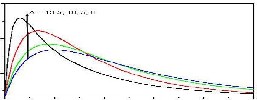

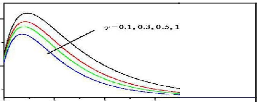
Figure 2 : [ ff ect of Ll on vel ocity a nd m icr orotation prufi le:;. fu r Gr=2, Gm=2, Pr=O.71, M =O.S, -y=0.1, K=O.S, F=O.S, A=O.S, Sc=O.l6, m=O.S, h=O a n d <p=0.3 .
u
Pr=0.71, M =O.S,Sc=0.22, K =O.S, F=O. 5, A=O.S, h=O.S, m =O. S
, A= and <p=0.3
u 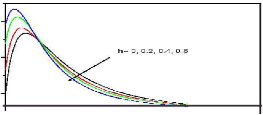
y
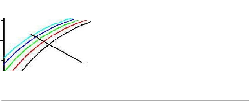
00,---------------------------------==========
h 0, U.:l, U.--1 , U.U, U.t1
y
Figure 4: Effect of h on velocity micr orotr1tion •
I em peratur e a n d Concentration pr ofil es for Gr=2, Gm =2, Pr=0.71, M =O.S, y=20, K=O.S, F=O.S, A=O.S, Sc=0.22,
m=O.S, A =S a nd <p=0.3 .
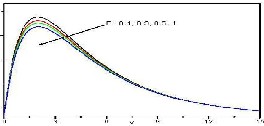
- ----
u

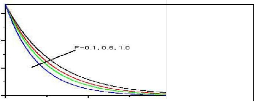
.. 
y - 0.9. 0.0. 0.3 . 0.-·
Figur e 5: [ffect of F o n velocity, mic ro rotat ion a nd
I em per<Jtur e pr of ile:;. fur G r=2, Gm =2, l'r=O. /1 , M =O., y=O.l, K =O.S, <f>"O.l, A =O.S, Sc=0.16, m=O.S, h=O a nd -"=5
IJSER lb)2012 http://www .llser. ora










